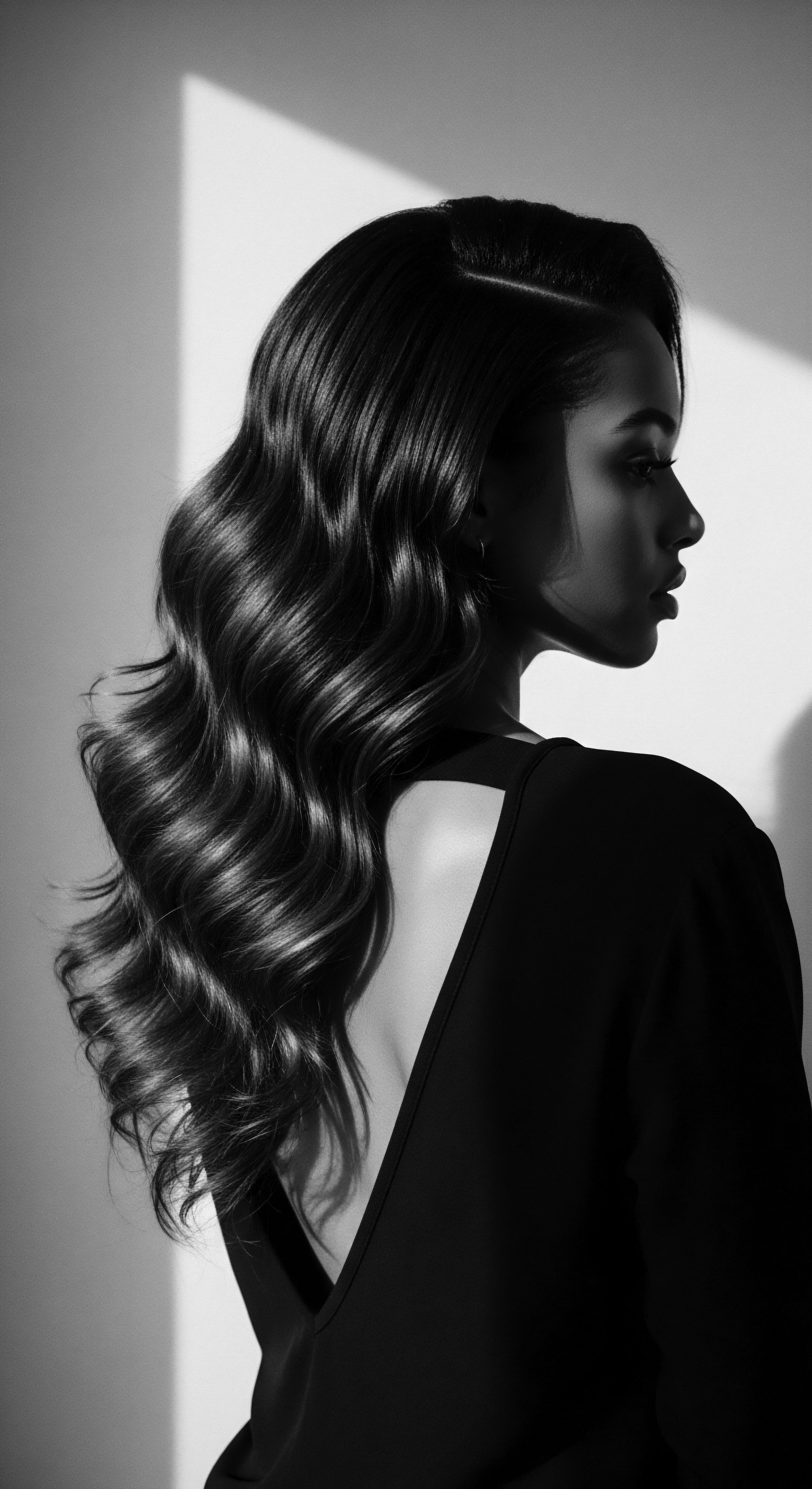
Fundamentals
The follicle structure stands as the profound origin point for every strand that graces our crowns, a delicate yet resilient wellspring residing just beneath the skin’s surface. It is a biological marvel, a miniature organ responsible for the generation and sustained growth of hair. Understanding this foundational element begins with recognizing its essential components ❉ the hair bulb, the dermal papilla, the hair matrix, the inner and outer root sheaths, and the sebaceous gland. Each part plays a vital role in the intricate process of hair formation, a continuous cycle of life and renewal.
This tiny, potent sanctuary guides the hair shaft as it emerges, dictating its fundamental shape, strength, and ultimate texture. For communities with textured hair, this biological blueprint is not merely a scientific fact; it is a point of ancestral connection, a testament to inherited beauty, and a direct link to the stories our hair carries.
The hair bulb, the base of the follicle, houses the actively dividing cells of the hair matrix. These cells are the architects of the hair fiber, continuously producing the keratin proteins that will form the growing strand. Nestled within the bulb lies the Dermal Papilla, a small, cone-shaped structure rich in blood vessels and nerves. This dermal papilla provides the vital nutrients and signaling molecules that nourish the hair matrix, sustaining its prolific activity.
The shape of this dermal papilla, alongside the overall curvature of the follicle itself, plays a decisive role in determining the curl pattern of the emerging hair. Straight hair typically arises from a more circular follicle and symmetrical bulb, whereas the curved, elliptical, or even S-shaped follicles characteristic of Afro-textured hair give rise to its distinctive coils and spirals.
Surrounding the growing hair shaft within the follicle are the inner and outer root sheaths. The Inner Root Sheath forms a protective tunnel, guiding the nascent hair as it keratinizes and hardens, ensuring its structural integrity during its ascent. The Outer Root Sheath extends from the epidermis down to the hair bulb, providing structural support and housing stem cells essential for follicle regeneration during the hair growth cycle. Adjacent to the follicle, the sebaceous gland produces sebum, a natural oil that lubricates the hair shaft and scalp.
In the case of highly coiled hair, the winding path of the strand can impede the natural distribution of this sebum down its length, often leading to a drier hair shaft even if the scalp produces ample oil. This inherent characteristic underscores the long-held ancestral wisdom regarding the need for consistent moisture and protective styling within Black and mixed-race hair care traditions.
The follicle structure is the essential biological architect of hair, its shape fundamentally shaping the unique curl patterns cherished across textured hair lineages.
This fundamental biological understanding of the follicle structure forms the basis for appreciating the rich diversity of human hair, particularly the resilient and varied expressions of textured hair. Its elemental biological components work in concert, creating the foundational properties of each strand. Our appreciation extends beyond its mere function, delving into the historical ingenuity of communities who, through generations, came to understand and work with these innate characteristics to nurture and adorn their crowns.
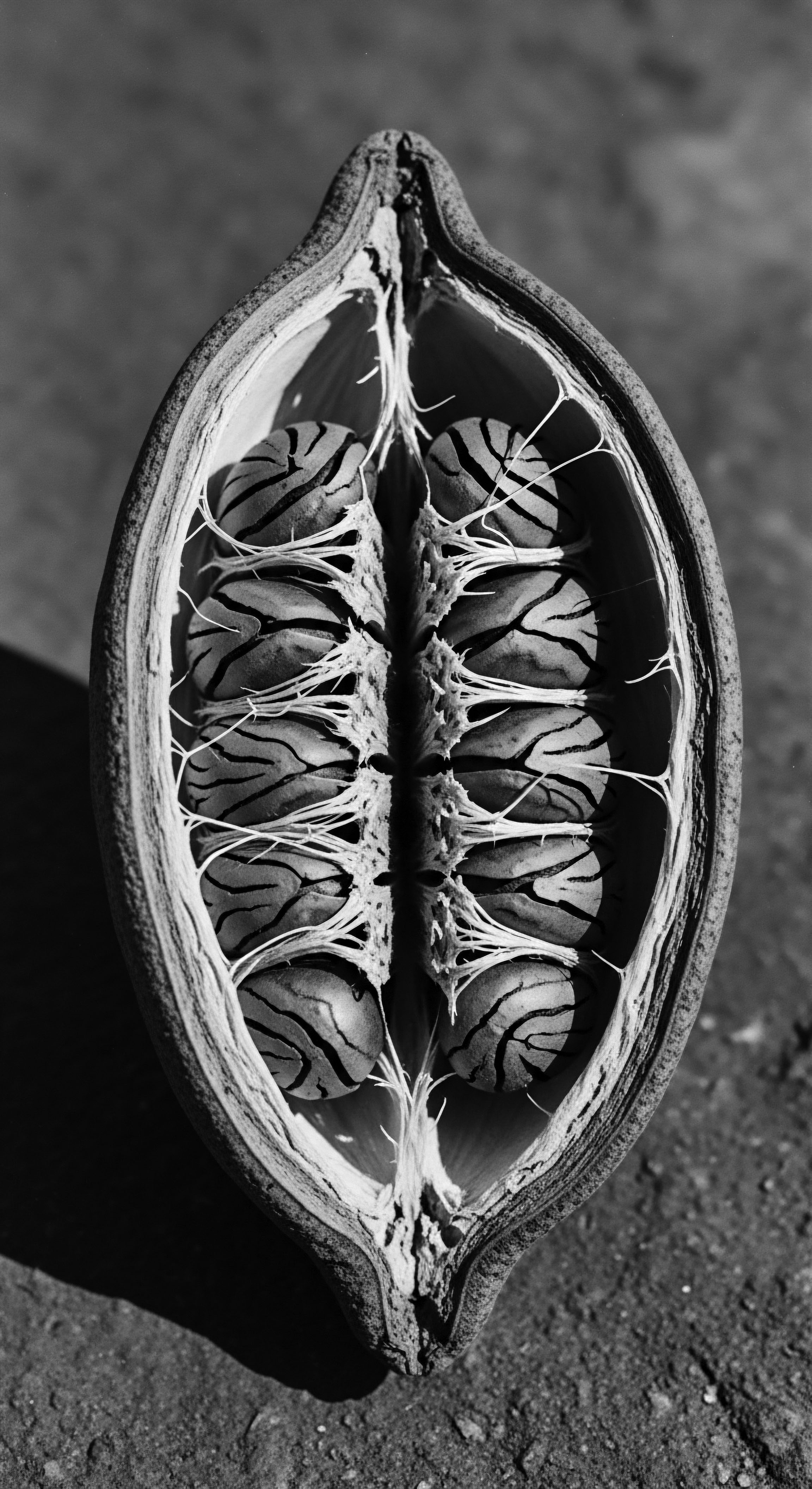
Intermediate
Moving beyond the foundational understanding, the follicle structure reveals itself as a silent narrator of human heritage, its morphology speaking volumes about adaptation, ancestry, and the profound journey of textured hair. The distinct curvature of the hair follicle, particularly pronounced in Afro-textured hair, stands as a defining characteristic. Unlike the more linear or gently curved follicles associated with straight or wavy hair, the follicle that yields tightly coiled strands often exhibits an elliptical cross-section and a retro-curvature at the hair bulb, creating an asymmetrical, sometimes S-shaped, trajectory beneath the skin. This architectural design directly influences the hair shaft’s shape, resulting in strands that are likewise elliptical, often with varying diameters and random reversals in direction along their length.
These structural realities carry significant implications for hair health and care practices, aspects deeply understood through generations in Black and mixed-race communities. The helical growth pattern of highly coiled hair means there are more points where the cuticle, the hair’s protective outer layer, is exposed due to turns and twists. This can render the hair more susceptible to mechanical stress and breakage, and can make moisture retention a continuous, vital practice.
The journey of sebum, the scalp’s natural conditioning oil, becomes more arduous along the winding path of a tightly coiled strand, leaving the ends particularly vulnerable to dryness. This inherent predisposition to dryness historically informed, and continues to guide, ancestral hair care rituals focused on deep conditioning, oiling, and protective styling.
The historical perspective surrounding follicle structure in textured hair is not merely academic; it is lived experience. Consider the rich tradition of hair care across the African continent, where practices evolved in harmony with the very nature of Afro-textured hair and its follicular origins.
- Shea Butter ❉ A cornerstone of West African hair care, this natural emollient, derived from the nut of the shea tree, was—and remains—revered for its exceptional moisturizing properties, directly addressing the inherent dryness challenges presented by coiled hair. Its use reflects a deep understanding of the hair’s need for external lubrication where natural sebum distribution might fall short.
- Traditional Oils ❉ Oils like marula oil and argan oil, sourced from various regions of Africa, served as potent elixirs, known for their ability to seal in moisture and offer protection from environmental elements. These botanical treasures were applied with intention, often worked into the scalp and along the hair shaft to nourish the emerging strands from the follicle and beyond.
- Clays ❉ Mineral-rich clays, such as Moroccan clay, found ancestral application in cleansing and detoxifying the scalp, ensuring a healthy environment for the follicle to thrive. These practices ensured optimal conditions for hair growth, recognizing the scalp as the fertile ground from which each strand springs.
These ancestral methods, often passed down orally through generations, reflect a profound empirical understanding of the follicle’s needs and the hair it produces. They are not random acts, but carefully honed rituals designed to mitigate the inherent vulnerabilities of highly textured hair. The meticulous techniques of braiding and threading, for instance, practiced widely across African communities, served not only aesthetic purposes but also protected the hair, minimizing manipulation and thereby reducing breakage at the fragile points where strands emerge from their follicles and begin their coiling journey.
The distinctive curvature of textured hair follicles informs a legacy of ancestral care practices focused on moisture and protection.
These practices speak to an intimate knowledge of the hair’s inherent properties, a knowledge that predates modern scientific classification. The recognition of hair as a living fiber, connected to identity and requiring specific, thoughtful attention, is woven into the fabric of these traditions. The follicle, as the hidden fount of this fiber, was implicitly understood as the origin of its strength, its vitality, and its unique cultural declaration.
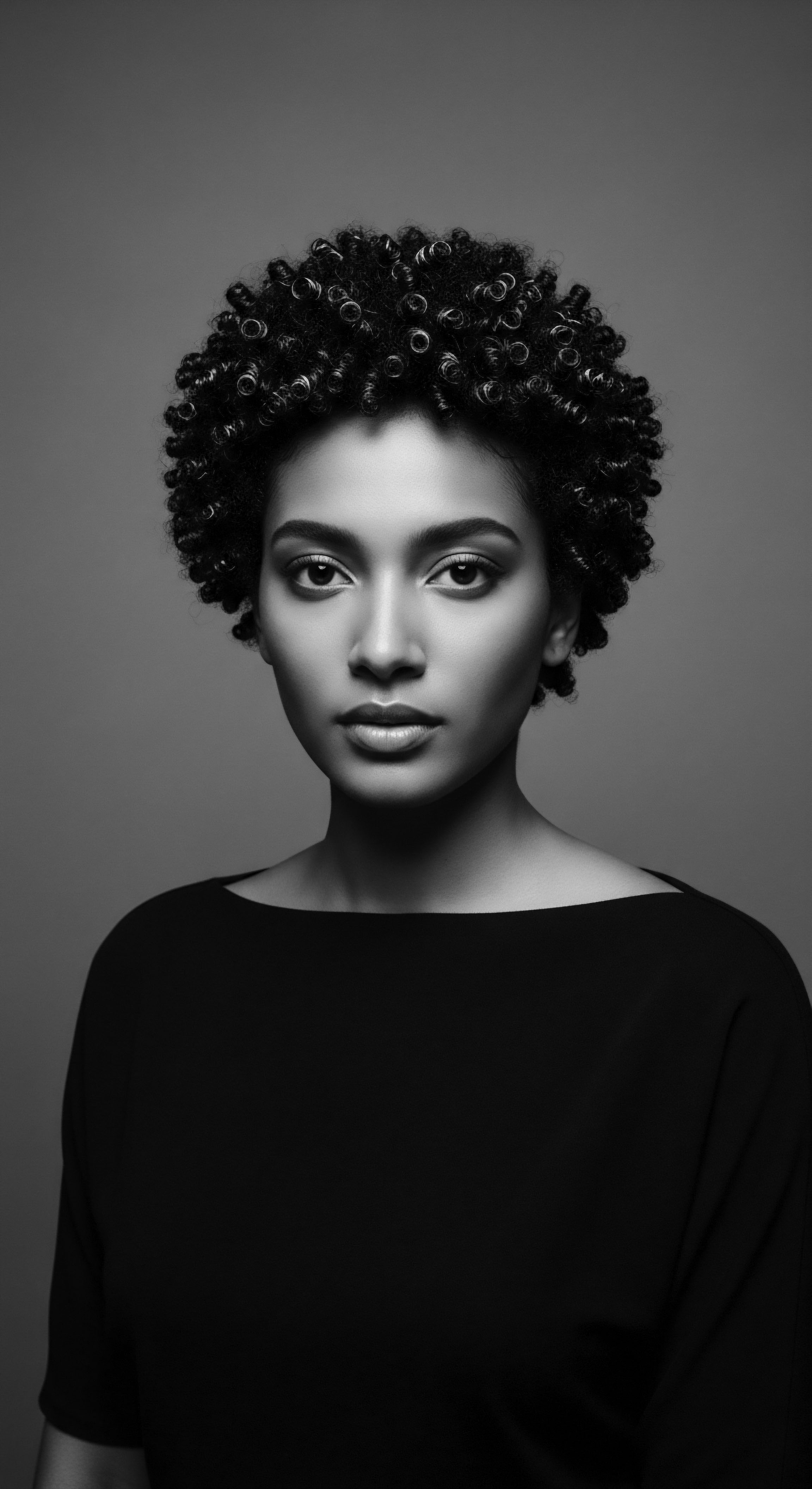
Academic
The Follicle Structure, from an academic vantage, represents a complex mini-organ whose precise morphological and physiological characteristics are inextricably linked to hair phenotype, particularly the intricate diversity of human hair textures. Its scientific delineation reveals far more than a simple anchor for the hair shaft; it manifests as a genetically and environmentally influenced biological system. The fundamental meaning of the follicle structure, then, transcends basic anatomy, encompassing its role as a dynamic developmental unit, a site of constant cellular proliferation and differentiation, and a profound determinant of an individual’s hair characteristics. For textured hair, this involves a specific architectural configuration, where the curvature of the follicle directly dictates the coiling trajectory of the hair fiber.
Scholarly investigations delineate that the hair follicle, particularly in individuals of African ancestry, frequently exhibits an elliptical cross-section and a distinctly curved, even S-shaped, geometry extending from the skin surface into the dermis. This curvilinear path contrasts with the more symmetrical, cylindrical, or slightly oval follicles found in straight or wavy hair types. The asymmetry of the hair matrix and the distribution of keratinocytes within the hair bulb, alongside the angularity of the follicle canal, are cited as key factors contributing to the helical growth of Afro-textured hair. This unique morphology has significant biomechanical consequences, rendering these hair fibers more prone to mechanical stress and breakage at the points of sharp curvature, which can lead to conditions like trichorrhexis nodosa, a common fragility.
The implication of this follicular architecture extends into the realm of hair care efficacy and dermatological health disparities. The tortuous path of coiled hair from the follicle inhibits the efficient distribution of sebum, the natural lipidic secretion from the sebaceous glands, along the hair shaft. This often results in a drier hair shaft, particularly at the ends, creating a physiological predisposition to moisture loss and increased susceptibility to damage. From a public health standpoint, this inherent vulnerability, combined with historically imposed beauty standards often favoring straightened hair, has led to a prevalence of styling practices that can compromise follicle health within Black and mixed-race communities.
A notable example from the scholarly record that powerfully illuminates the Follicle Structure’s connection to textured hair heritage and Black hair experiences involves the incidence of Traction Alopecia. This condition, characterized by hair loss due to prolonged tension on the hair follicles, disproportionately affects women of African descent. Research indicates that approximately one-third of women of African descent experience traction alopecia. This is directly linked to hair care practices such as tight braiding, cornrows, and the use of heavy hair extensions or weaves, which exert continuous mechanical stress on the follicle.
The history of Black hair in the diaspora, shaped by centuries of societal pressures to conform to Eurocentric beauty ideals, often saw the widespread adoption of such styles, sometimes combined with chemical relaxers, to achieve desired aesthetics. This highlights a complex interplay between the intrinsic structural properties of the follicle, the cultural context of hair styling, and the resultant dermatological outcomes. These practices, though often seen as protective or necessary for managing hair, can lead to follicular inflammation and scarring if the tension is sustained.
| Hair Type (Ancestral Origin) African/Afro-Textured |
| Follicle Cross-Section Elliptical, flat |
| Follicle Shape Beneath Skin Asymmetrical S-shaped, curved, retro-curved bulb |
| Hair Shaft Characteristics Tightly coiled, elliptical, varying diameter, reversals in direction |
| Hair Type (Ancestral Origin) European/Caucasian |
| Follicle Cross-Section Round to oval |
| Follicle Shape Beneath Skin Slightly curved to round |
| Hair Shaft Characteristics Straight to wavy, round to oval |
| Hair Type (Ancestral Origin) Asian |
| Follicle Cross-Section Cylindrical |
| Follicle Shape Beneath Skin Straight to slightly curved |
| Hair Shaft Characteristics Straight, cylindrical, large diameter |
| Hair Type (Ancestral Origin) These morphological distinctions, while generalized, underscore the biological underpinnings of hair diversity and inform the specific care needs across different heritage groups. |
The concept of the follicle reservoir also bears significance in academic discourse, particularly concerning transdermal drug delivery and cosmetic absorption. Studies have indicated that follicular density and volume can vary across ethnic groups. Mangelsdorf et al. (2006) revealed that Caucasians possessed significantly more hair follicles in the forehead region compared to Africans and Asians, and displayed increased follicular infundibulum volumes.
Conversely, some studies indicate a slightly greater hair follicle density on the upper arm of individuals of African descent. These subtle anatomical distinctions, while perhaps not immediately apparent to the eye, may affect how topical agents penetrate the skin and reach deeper layers. This research area underscores the need for culturally informed approaches in product development and dermatological treatments, moving beyond a historical bias towards Caucasian skin and hair in research.
The follicle’s genetic programming and architectural form shape hair phenotype, influencing vulnerability and informing culturally specific care strategies across heritage lines.
Moreover, genetic studies are steadily illuminating the molecular underpinnings of follicle morphology and hair texture. Genes such as KRT74, TCHH, and CUTC have been identified as contributors to curl patterns, particularly in African populations. These genetic predispositions mean that the inherent structure of the follicle is not merely a random occurrence, but a deeply embedded ancestral inheritance. The understanding of these genetic markers provides a powerful lens through which to appreciate the biological legacy carried within each strand of textured hair.
It validates the biological reality of hair diversity, moving past antiquated notions of a singular “norm” for hair structure. The exploration of follicular biology, when approached with a heritage-conscious perspective, serves to affirm the unique properties and inherent beauty of textured hair, grounding ancestral wisdom in contemporary scientific understanding.
The ongoing research into the genetic and molecular biology of the hair follicle offers the potential for tailored hair care solutions that truly honor the unique needs of textured hair. This scholarly pursuit, when driven by a respect for heritage, can serve to dismantle outdated beauty narratives and provide evidence-based affirmation of diverse hair types. It is a scientific endeavor that can bridge the chasm between historical experience and future innovation, ensuring that the care of textured hair is both scientifically sound and deeply culturally resonant.
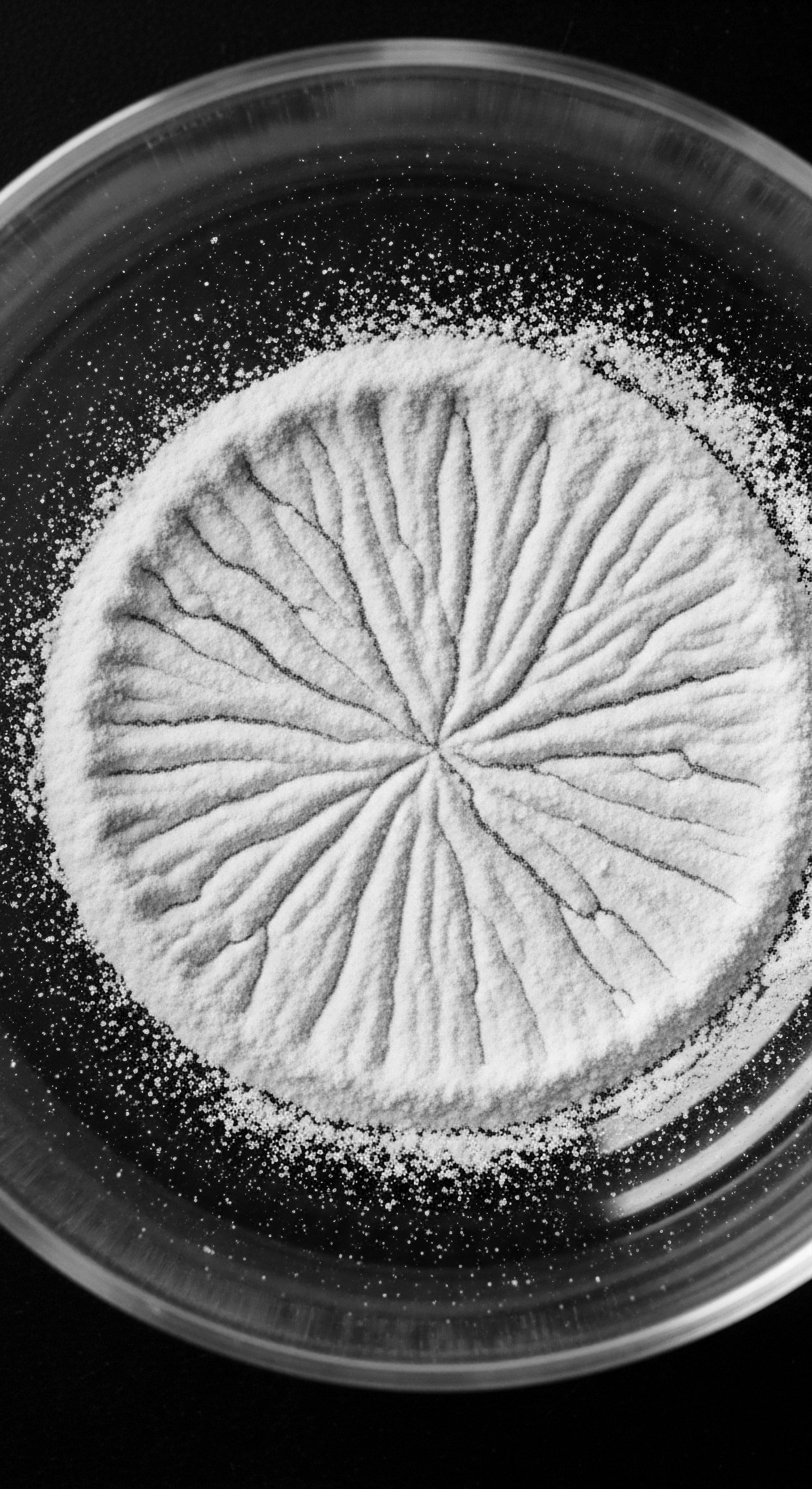
Reflection on the Heritage of Follicle Structure
The journey through the follicle structure, from its elemental biology to its profound implications for textured hair heritage, reveals a narrative far richer than mere scientific diagrams. Each curve of the follicle, each twist of the hair shaft, echoes with the wisdom of generations who understood the intimate connection between hair, spirit, and identity. This journey compels us to look beyond the superficial, inviting a soulful contemplation of our strands as living archives of ancestral memory. The care rituals passed down through Black and mixed-race communities, born from deep attunement to the hair’s natural inclinations, now find validation in scientific inquiry, affirming that ancient knowledge holds enduring truth.
The story of the follicle structure is a testament to resilience. It reminds us of those who, despite attempts to strip away their cultural expressions, braided resistance into their very beings, nurturing hair as a symbol of defiance and continuity. These practices, often performed communally, forged bonds and preserved heritage, transforming what might seem a simple biological unit into a profound cultural touchstone. The follicular differences, once perhaps misunderstood or even stigmatized, are now celebrated as markers of unique beauty and adaptive strength, a reminder of the ancestral journeys taken across continents and through time.
Our reverence for the follicle structure compels us to consider the ethical dimensions of modern hair care. As we gain deeper insights into its biological intricacies, we are called to ensure that products and practices truly support the health of textured hair, honoring its heritage rather than seeking to alter it. The natural hair movement, a powerful contemporary expression of this reverence, is a testament to the enduring human spirit’s yearning for authenticity and self-acceptance.
It is a movement that reaches back into the past, drawing strength from ancestral practices, while simultaneously shaping a future where every textured crown is recognized for its inherent splendor and its vital connection to a living, breathing history. The follicle structure, in its quiet power, stands as a reminder that the profound story of heritage is truly woven from the source, strand by singular strand.
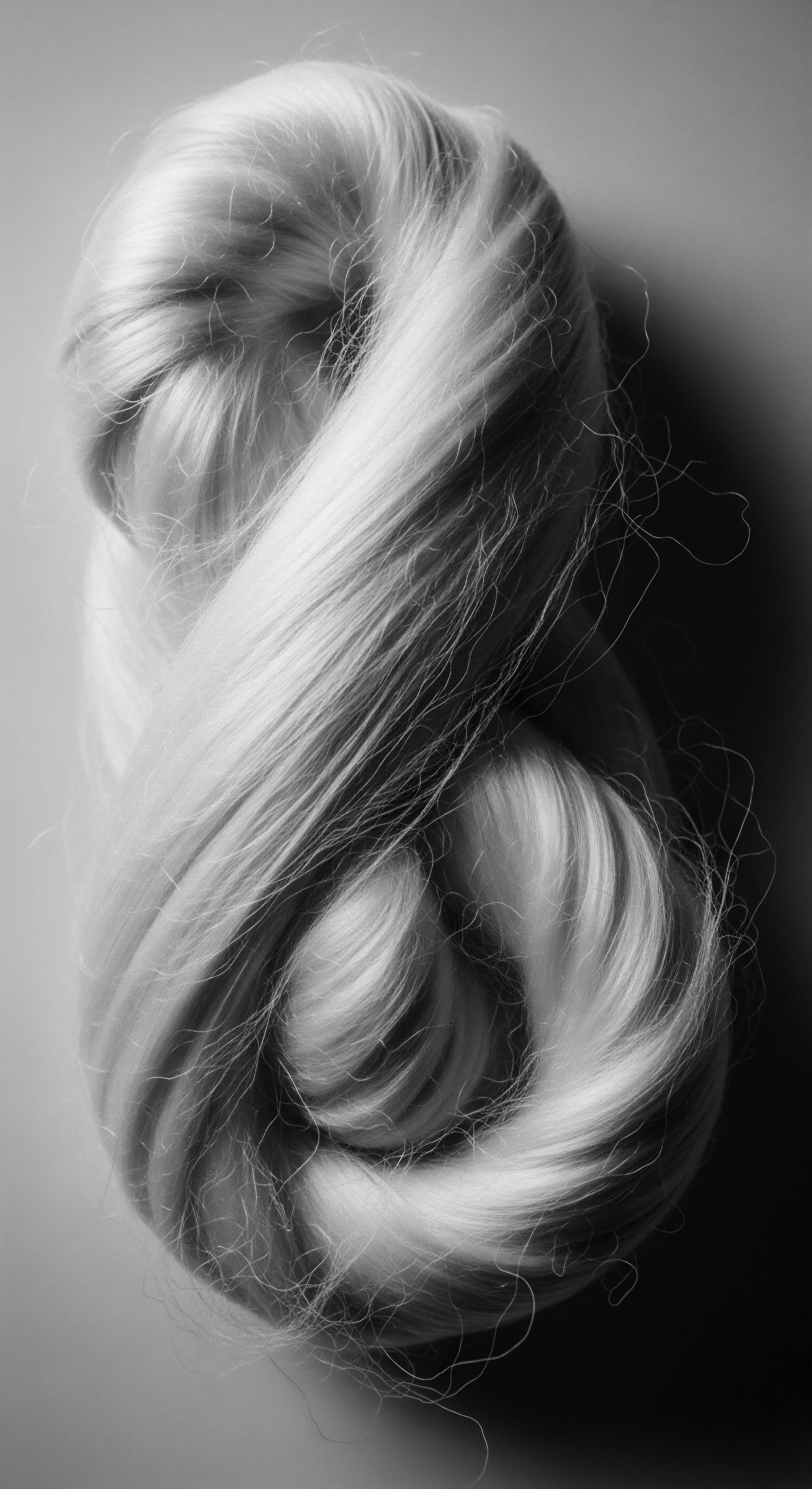
References
- Mangelsdorf, S. et al. (2006). “Ethnic Variation in Vellus Hair Follicle Size and Distribution.” _Skin Pharmacology and Physiology_, 19(5), 268-274.
- Mayer, T. et al. (2012). “Ethnic differences in skin physiology, hair follicle morphology and follicular penetration.” _Skin Pharmacology and Physiology_, 25(3), 136-140.
- Byrd, A. D. & Tharps, L. L. (2014). _Hair Story ❉ Untangling the Roots of Black Hair in America_. St Martin’s Griffin.
- Ahn, H. et al. (2023). “Historical Perspectives on Hair Care and Common Styling Practices in Black Women.” _Cutis_, 111(1), E17-E21.
- Gabir, M. (2019). “The what, why and how of curly hair ❉ a review.” _International Journal of Cosmetic Science_, 41(6), 522-536.
- Sieber, R. & Herreman, D. (2000). _Hair in African Art and Culture_. Museum for African Art.
- Khumalo, N. P. et al. (2013). “Hair and Scalp Disorders in Ethnic Populations.” _Journal of Drugs in Dermatology_, 12(4), 420-427.
- Gathers, A. et al. (2022). “Afro-Ethnic Hairstyling Trends, Risks, and Recommendations.” _Cosmetics_, 9(1), 17.
- Jackson, M. (2023). “What Every Dermatologist Must Know About the History of Black Hair.” _Practical Dermatology_, November, 26-30.
